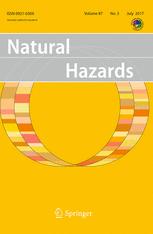Describing the severity of avalanche terrain numerically using the observed terrain selection practices of professional guides
Abstract
The physical risk from snow avalanches poses a serious threat to mountain backcountry travelers. Avalanche risk is primarily managed by (1) assessing avalanche hazard through analysis of the local weather, snowpack, and recent avalanche activity and (2) selecting terrain that limits exposure to the identified hazard. Professional ski guides have a tremendous wealth of knowledge about using terrain to manage avalanche risk, but their expertise is tacit, which makes it difficult for them to explicitly articulate the underlying decision rules. To make this existing expertise more broadly accessible, this study examines whether it is possible to derive quantitative measures for avalanche terrain severity and condition-dependent terrain guidance directly from observed terrain selection of professional guides. We equipped lead guides at Mike Wiegele Helicopter Skiing with GPS tracking units during the 2014/2015 and 2015/2016 winters creating a dataset of 10,592 high-resolution tracked ski runs. We used four characteristics—incline, vegetation, down-slope curvature (convexities/concavities), and cross-slope curvature (gullies/ridges)—to describe the skied terrain and employed a mixed-effects ordered logistic regression model to examine the relationship between the character of most severe avalanche terrain skied on a day and the associated field-validated avalanche hazard ratings. Patterns in the regression parameter estimates reflected the existing understanding of how terrain is selected to manage avalanche risk well: the guides skied steeper, less dense vegetation, and more convoluted slopes during times of lower avalanche hazard. Avalanche terrain severity scores derived from the parameter estimates compared well to terrain previously zoned according to the Avalanche Terrain Exposure Scale. Using a GIS implementation of the regression analysis, we created avalanche condition-dependent maps that provide insights into what type of terrain guides deemed acceptable for skiing under different avalanche hazard conditions. These promising results highlight the potential of tracking guides’ terrain selection decisions as they manage avalanche hazard for the development of evidence-based avalanche terrain ratings and decision aids for professional and recreational backcountry travelers.
You can view a read-only version of the full article by clicking here. A journal subscription to Natural Hazards is required to download and print the article.

